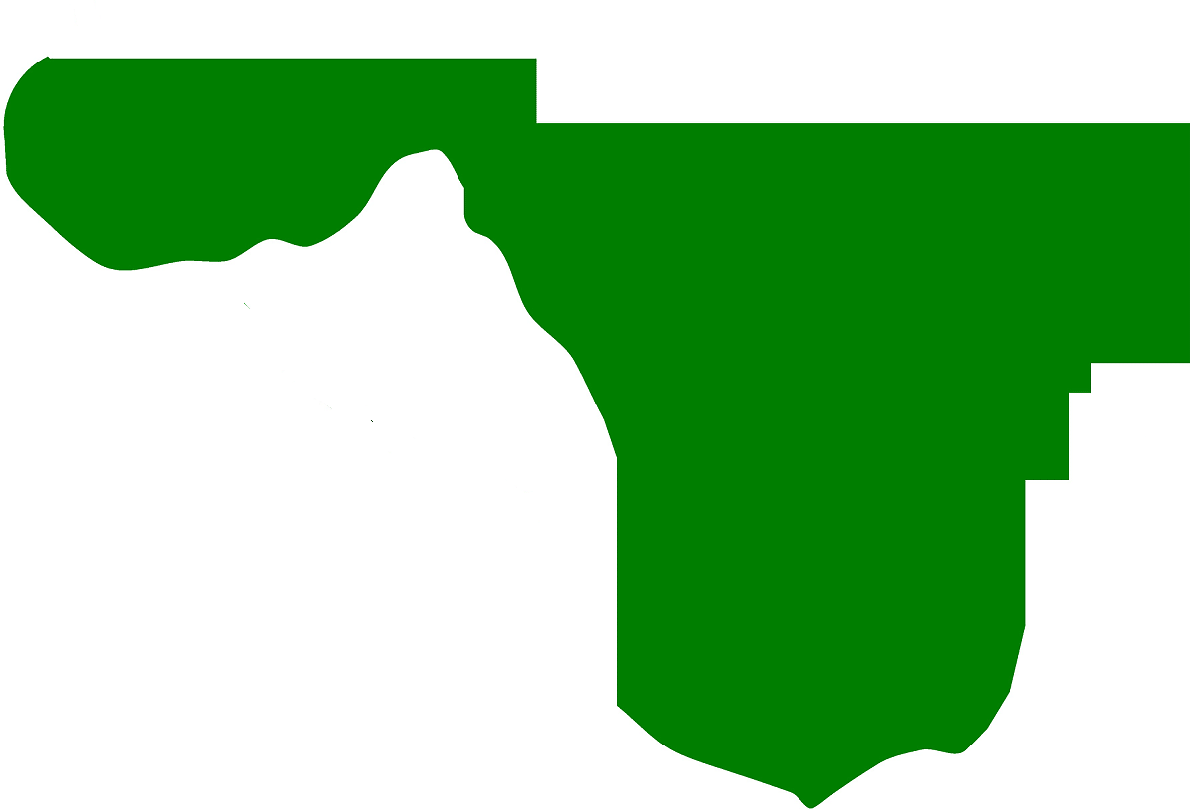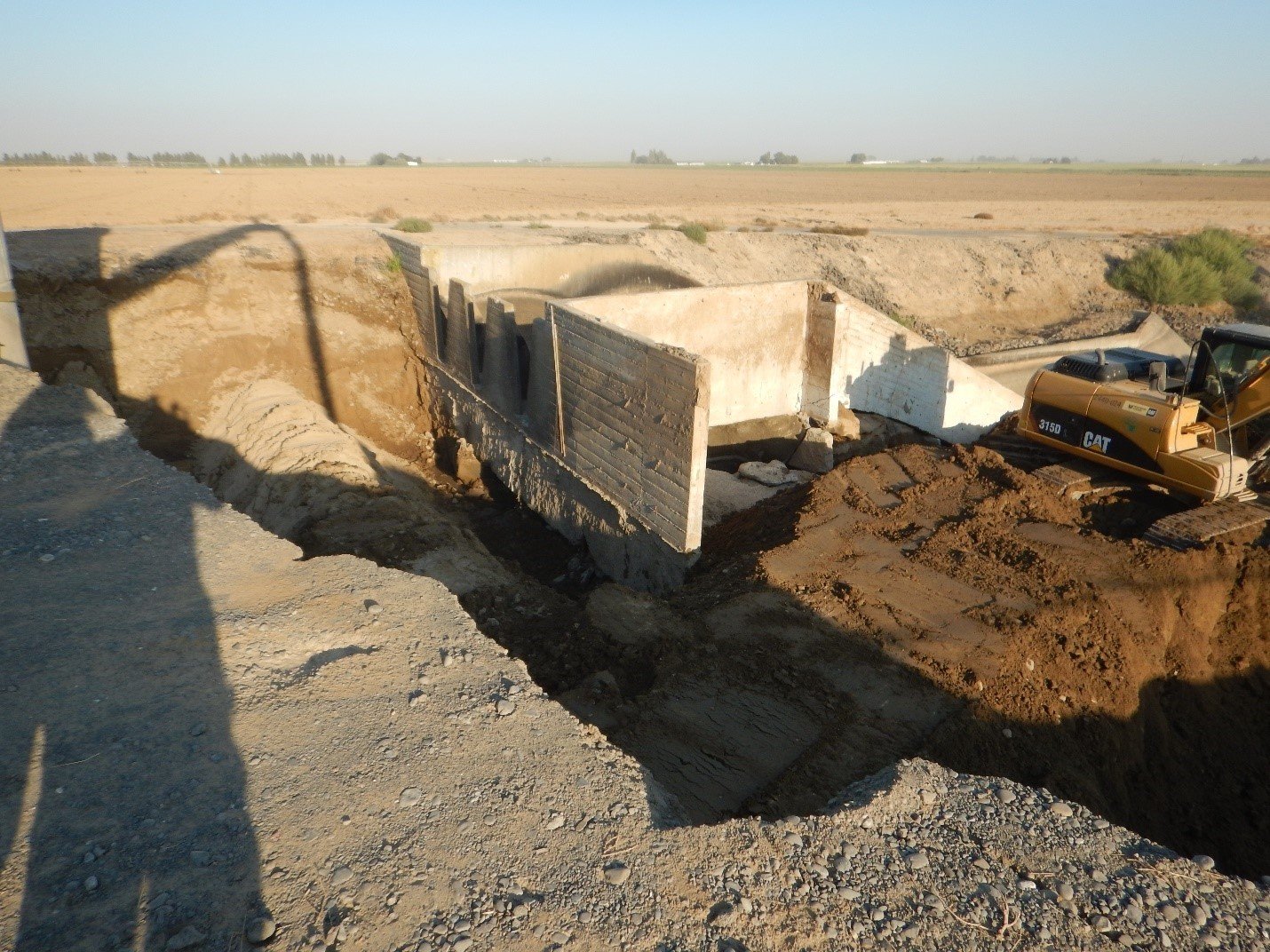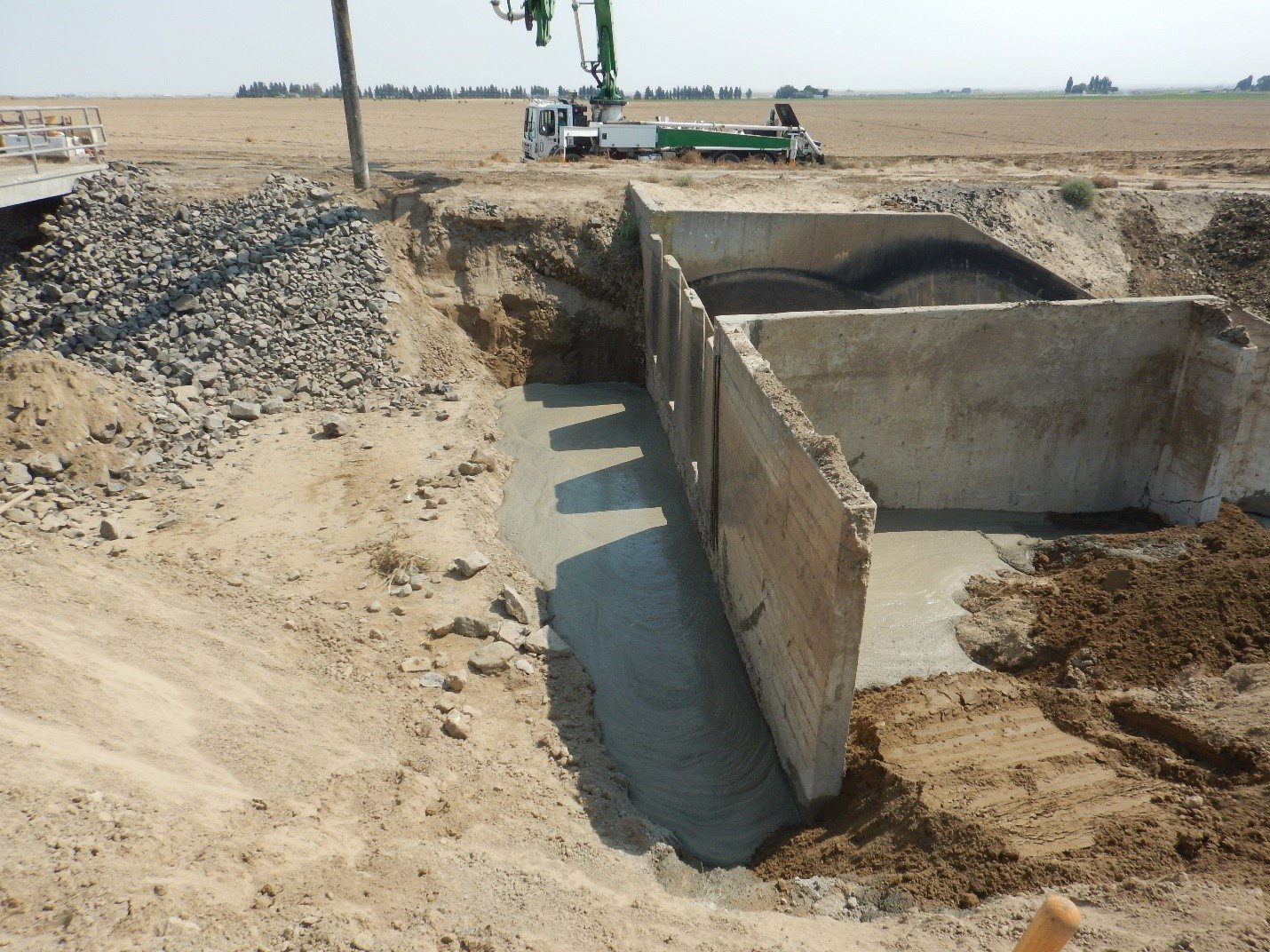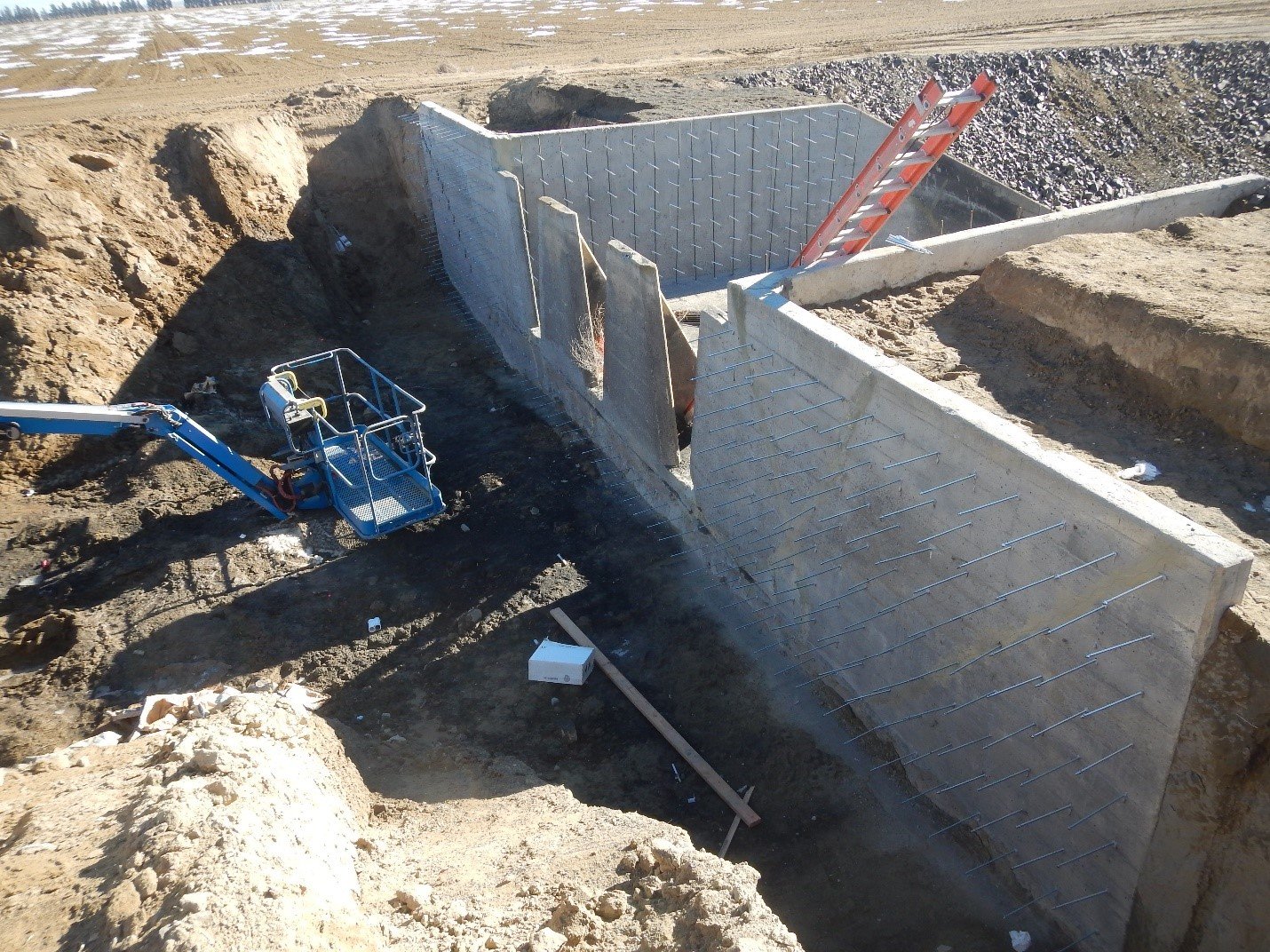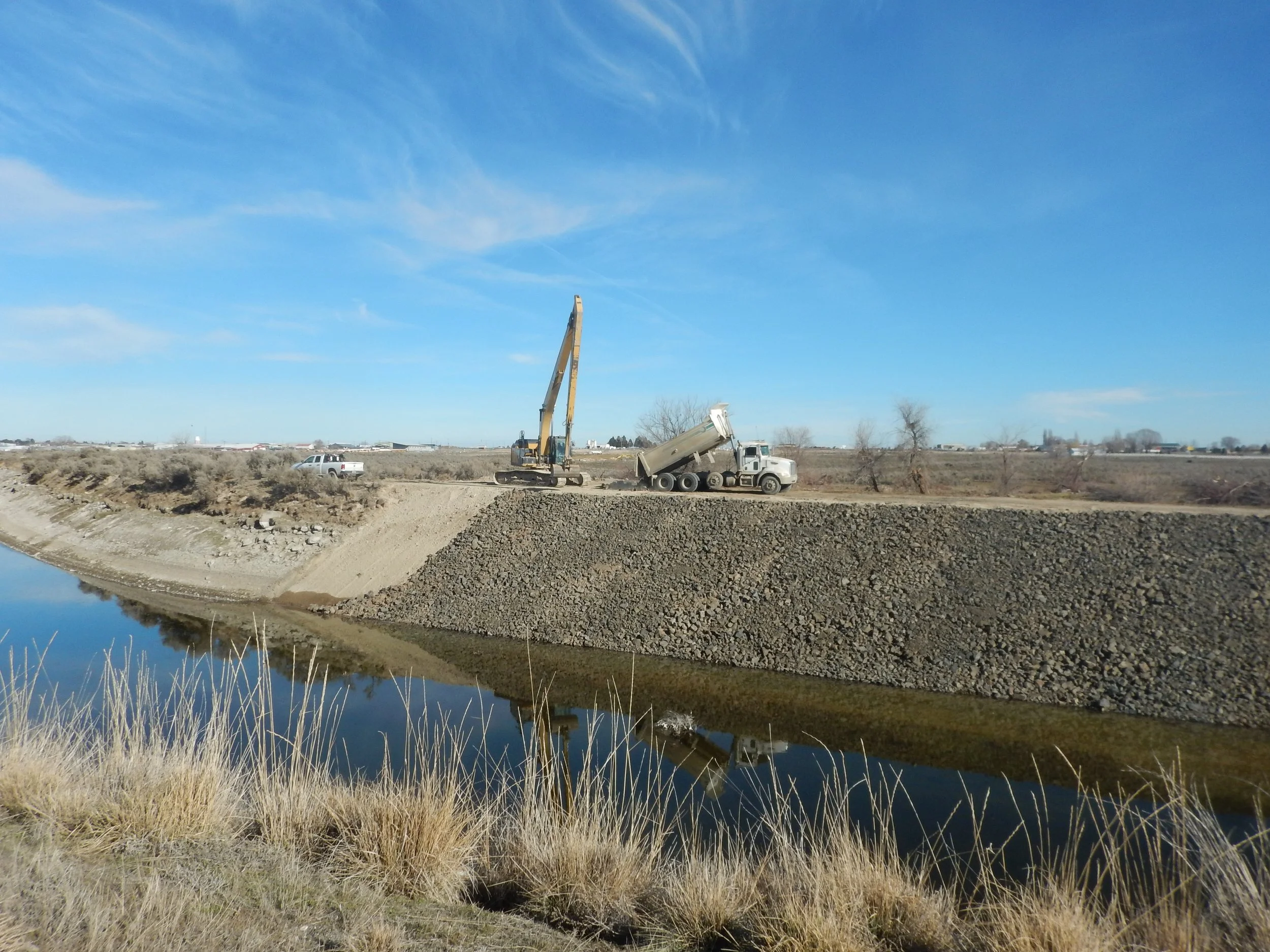In August of 2021, a drop structure on the EL85 lateral partially washed out, resulting in a service disruption to water deliveries in Irrigation Block 18. The washout resulted in erosion under the structure causing it to twist and settle on the downstream end. The twisting and settlement of the structure caused several large cracks to develop on the upstream face and along the inside walls of the drop. The District stabilized the structure with controlled density fill , repaired the cracks, and replaced several thousand cubic yards of soil that had been washed away. Work was completed and the EL85 lateral was back up and running within 5 days. However, a more permanent repair would be required during the irrigation off season.
During the winter of 2021-2022, the District completed permanent repairs to the failed drop structure and EL85 irrigation lateral. New structural concrete walls were placed in front of, and within the upper portion of the structure. No work was done to the inclined portion of the chute or the lower stilling basin as these areas had remained mostly unaffected. Lastly, the EL85 lateral was lined with an impervious geomembrane immediately upstream of the drop structure to prevent future seepage or erosion from occurring.
